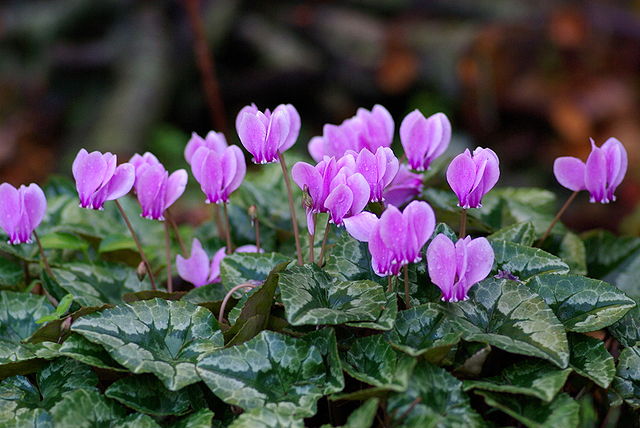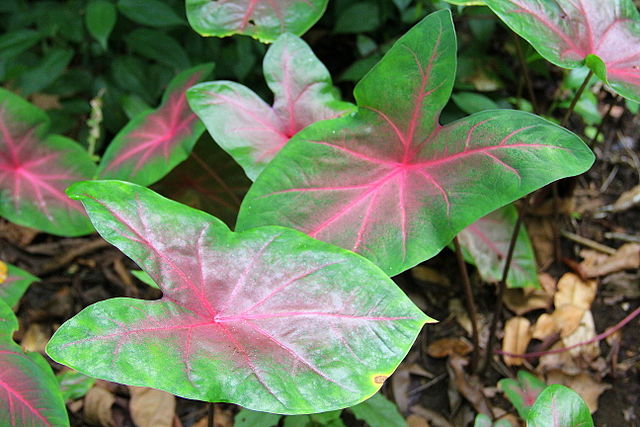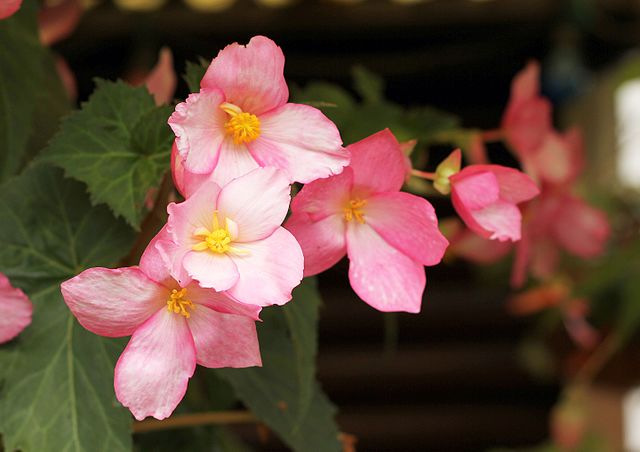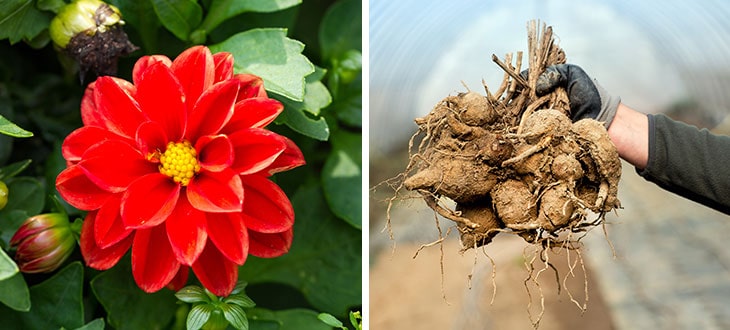7 Flowers With Tubers
Are you looking for flowers with tubers? Here is a list of several species of flowering plants with this reproduction mechanism.
Some species of plants produce tubers to store nutrients and survive the winter or dry months.
Although they have different structures botanically, many confuse tubers with true bulbs, corms, rhizomes, or tuberous roots, and it’s easy to understand why. They are even generally called “bulbs.”
According to Wikipedia:
Tubers are enlarged structures used as storage organs for nutrients in some plants. They are used for the plant’s perennation (survival of the winter or dry months), to provide energy and nutrients for regrowth during the next growing season, and as a means of reproduction.
Wikipedia
Usually, the tubers are classified into:
- Stem tubers – forming from thickened rhizomes or stolons.
- Root tubers – a modified lateral root, enlarged to function as a storage organ.
As the purpose of this article is not to learn about tubers, we will continue with a list of flowers with tubers.
1. Peonies

Peonies are perennial flowering plants in the family Paeoniaceae. The name “peonies” is used collectively for over 30 species native to Asia, Europe, and Western North America.
Some species of peonies are popular garden plants and are also sold as cut flowers in late spring and early summer when they bloom.
Garden peonies are remarkably beautiful, hardy, and also have the advantage that, after planting, they bloom year after year, with a minimum of care.
Their foliage can vary in height and texture. Most of the common varieties reach about 35 inches (90 cm) in height, while the dwarf species grow up to heights of about 13-14 inches (35 cm).
The common species produce fragrant, beautiful flowers that are typically pink, red, or purple.
Peonies grow from tubers that have the role of storing nutrients for the plant and regrowing the plant the next year.
2. Cyclamen

Cyclamen is the name of a genus of perennial flowering plants in the family Primulaceae, native to Europe and the Middle East.
This plant is most frequently grown as a potted plant for the interior. During its dormant period, its leaves may dry completely, which can fool many to believe that the plant is dead.
There are both species that can survive planted in the garden, but also some that cannot survive winter outside and are grown strictly as houseplants.
Cyclamen produces flowers in many shades, such as purple, pink, or white, and the flowering period varies from species to species.
The plants in this genus grow from tubers.
3. Anemones

Anemone is a genus of perennial flowering plants in the family Ranunculaceae (also known as buttercup family), native to many countries in the temperate and subtropical regions. They are also commonly known as “windflowers.”
Anemones are grown as garden plants and can be grown either directly in the ground or in containers. They are also sold as cut flowers.
These flowers stand out by their vivid colors which give life to any flower garden. Their colors vary from red to blue and bright yellow. Their blooming period varies from species to species.
Many Anemone species are tuberous-rooted plants.
4. Dahlias

Dahlia is the name collectively used for a genus of over 40 species of perennial plants native to Central America and Mexico. They belong to the family Asteraceae.
Dahlias are flowers with tuberous roots that can reach heights between 20 to 70 inches (50 to 180 cm) depending on the species.
They are commonly grown as garden plants due to their gorgeous blooms with varying forms and colors. The color of the flowers varies from red to pink, white, yellow, and purple. There are also varieties whose petals are in two colors.
Although they are perennials, they cannot withstand freezing temperatures. That’s why dahlias are grown as annuals in many world regions.
In order to survive the frost, their tubers are removed from the ground, stored in a place protected from frost, and replanted in late spring.
5. Caladiums

Caladium is a genus of flowering plants in the family Araceae. They are native to South America and Central America and naturalized in other regions of the world.
Several species of caladium are popular ornamental plants and are grown for their large, arrowhead-shaped leaves dyed in varying red, white, or pink patterns.
Caladiums are plants that grow from tubers and can be easily multiplied by dividing the tubers in the spring.
These plants do not cope well with the cold, so they are grown as indoor plants in many climates.
6. Orchids

Orchids are perennial flowering plants belonging to a large family of plants called Orchidaceae (also called the orchid family).
Orchids are remarkable flowers and are often seen as a symbol of refinement. Many species are popular indoor decorative plants because of their gorgeous colorful flowers which last an extended period.
Based on their growing habits, orchids are usually classified in:
- Terrestrial (grow on the ground)
- Epiphytic (grow in trees and have aerial roots)
- Lithophytic (live on rocks)
- Saprophytic (obtain their food from dead organic matter)
Only some terrestrial species of orchids form tubers.
7. Tuberous Begonias

Tuberous begonias (Begonia × tuberhybrida) are a group of Begonia cultivars native to tropical South America and southern Africa.
They are popular for their lovely flowers found in a variety of shapes and colors, including red, white, orange, pink, salmon, or yellow.
Tuberous begonias are frequently grown as container plants and placed in hanging baskets on porches, balconies, or patios. They bloom throughout the summer till fall.
While begonias love light, they do not tolerate direct sunlight and grow best in partially shaded places.
As their name suggests, tuberous begonias grow from tubers.
Final Word
Tubers are essential mechanisms for plants to store vital nutrients and energy to regrow the plant in the next season.
Although tubers are different from the real bulbs, corms, or rhizomes from a botanical standpoint, they are often called simply “bulbs.”
We hope you enjoyed our list of some of the most common species of flowers with tubers.

